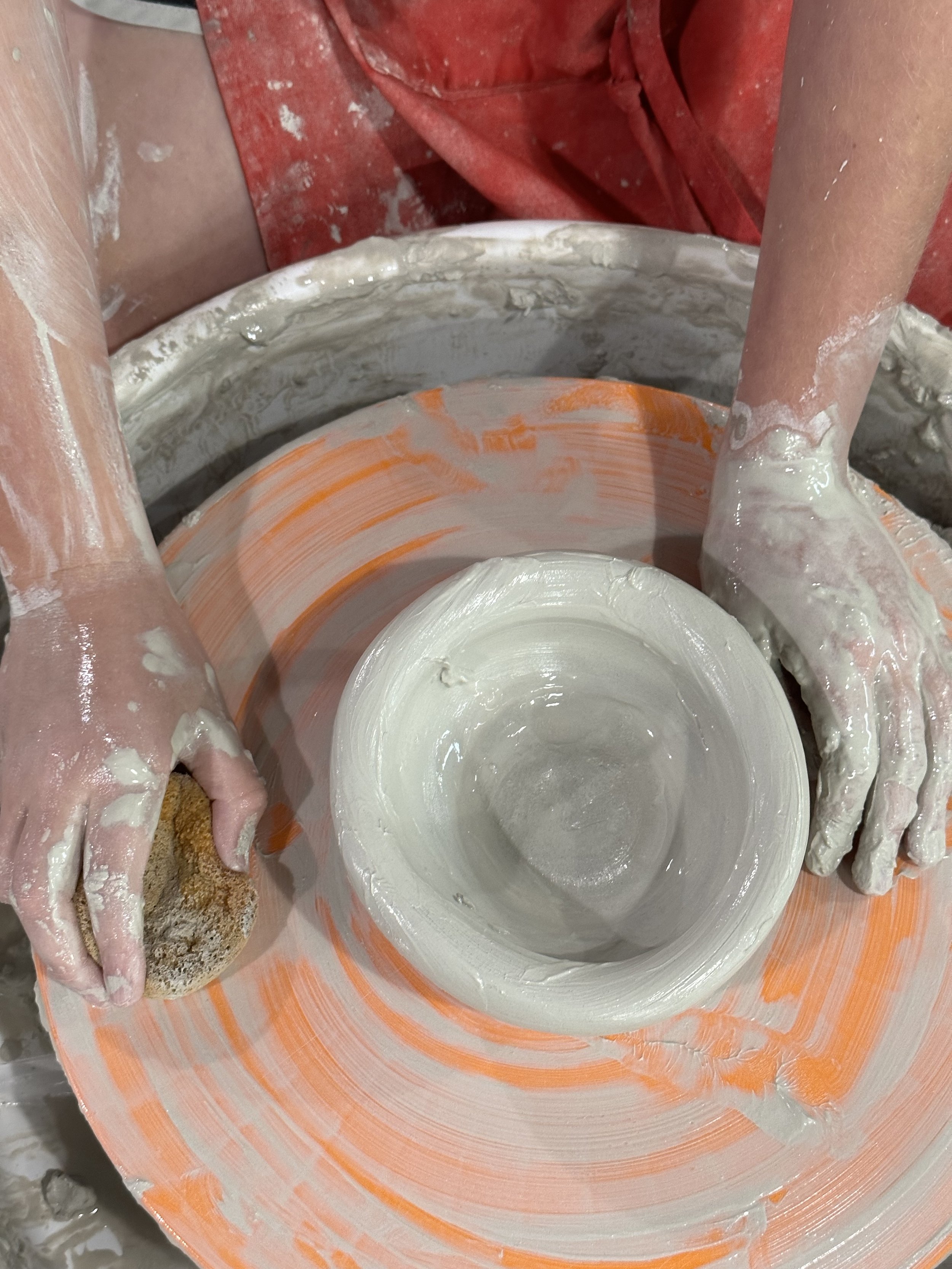The Painful and Powerful Process of Making
I reluctantly approached the double glass doors picturing his face and recalling his contagious laugh knowing he wasn’t there. Familiar, yes. Same, no. The Black Oak Art studio my cousin founded remains despite losing Jonathan unexpectedly last year. This building, this art, this business won’t ever be the same, but it will always be his.
The teacher of the pottery class welcomed my daughter and I, showing us the aprons and ushering us to the break room for storage of our personal items. Tears filled. Memories flooded. Thoughts flowed. As others arrived my joyful smile met their eager hello, yet my heart ached.
It was time for the pottery class. As directed, I selected the lump of clay laid out for each participant and positioned myself upon the seat, careful not to tip while listening to her detailed instructions. Step by step she spoke and demonstrated each technique. How do teachers always make it look so easy? Remarkably, with each instruction, I couldn’t ignore the spiritual significance of each step.
find center.
The process of centering is not a gentle one. In fact, it requires focused force to throw unformed clay upon the wheel in just the right spot. Each time clay splat upon the surface it echoed through the studio—a signal of beginning again.
It is an understatement to say that centering clay is foundational for the success of the art in general. If I were to continue forward without proper centering, no matter what I tried or how skilled I was, the walls of my work risked tumbling over. Believe me when I say that I speak from experience.
But the position of the clay is only one part of centering.
2. apply pressure.
To really ground the clay before sculpting, pressure must be applied directly from the artist’s palms. This pressure is evidence of a steady presence intentionally applying weight, not to break it but to make it stronger. Despite what may appear on the surface, pressure actually works to evenly shape the clay providing a sturdy foundation for the art: a foundation that would otherwise not withstand sculpting.
Along with pressure, it was necessary to frequently dip one hand into a basin of water while the other kept consistent support on the clay. The water lessened the friction between hand and clay, creating a shining, smoothing effect.
This is when I learned the next lesson.
3. watch your Speed.
Astonishingly the teacher would walk over and check each work assessing for proper centering. Time and time again, she observed the participants advising whether to continue finding center or advising it was time to start over. The number one factor that could make or break your masterpiece once it was centered? Speed.
Before you assume it always required slow speed, allow me to contradict. There were specific times when yes, slow speed was necessary. But other times increasing speed helped form the intended shape of the art.
Constant discernment remained paramount either way.
4. find stillness.
Once the clay was anchored and centered, it was time to sculpt. Sculpting involved linking the thumbs of each hand while one hand glided on the outside with forceful support as two fingers began to etch deeply into the clay’s surface. The intentional placement of my fingers on the clay determined the exact shape, size, and functionality of each piece.
With my right foot on the peddle discerning speed and fingers linked applying shape, the key in this phase was to discover a holistic stillness with your mind, heart, and body. “Find stillness”, the teacher would repeat often. Stillness resembled anchoring with steady breath. Elbows positioned deeply into thighs. My gaze fixed on the developing shape in front of me. My mind focused on each factor of the process while the wheel continued spinning until… I determined it was finished.
No more spinning. No more pressure. No more sculpting.
It was time to rest.
5. celebrate uniqueness.
As my daughter and I finished, we carefully scored the edges of our creation, lifting the potter’s wheel, and transporting it over to the drying rack for final inspection. Perfect? Not a chance, but they were ours.
What was once only a lump of clay now held form, and after being put into the fire—purpose.
Not one piece created was the same. A slight move of the thumb or slowing down of speed determined the unique fingerprint of each artist on their creation. Some made plates, others bowls or vases. I stood back and marveled.
“But now, O Lord, you are our Father; we are the clay, and you are our potter; we are all the work of your hand. Isaiah 64:8 ESV
Perhaps the pressures of life: relationships, parenting, finances, and schedules are all tools in the hands of a good Father to sculpt us into more of His image here and now. With each careful increase in speed or mindful slowing down, God indeed is purposeful in what He allows, gives, and offers each one of us along life’s way.
No two of our journeys are the exact same, yet as we fully throw ourselves upon the wheel of His steady love, possibly only then will we feel centered and anchored for what comes next.
When we embrace the powerful and painful process of making —art, family, vocation, life—we will also recognize his careful craftsmanship all along. And like my cousin, as we learn to surrender to His outcome for our lives, only then can our lives truly be used for the good of others long after we are gone.
“For we are his workmanship, created in Christ Jesus for good works, which God prepared beforehand, that we should walk in them.” Ephesians 2:10
Let’s walk forward with greater awareness that we are works in progress in the hands of a faithful, creative God.



